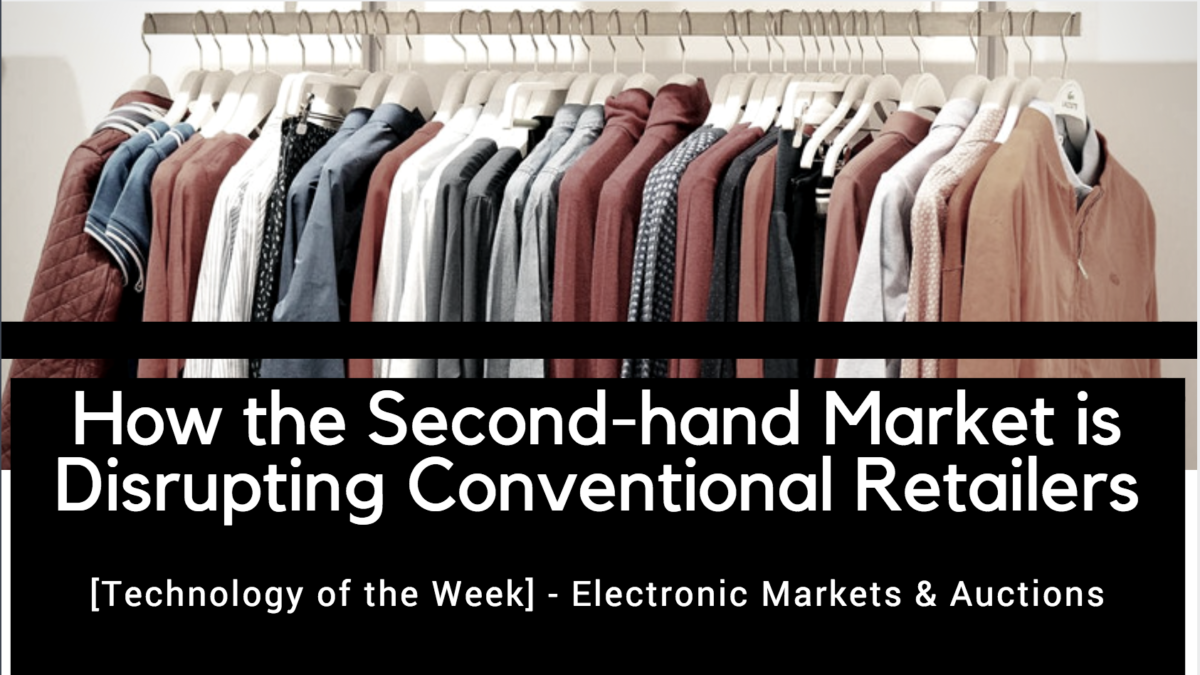Up until the mid-19th century, acquiring exclusive new clothes was only for the rich. The second-hand ‘market’ consisted of the less wealthy passing on their old clothes to each other.
Mass manufacturers later entered the market and made new clothes available to everybody. However, the second-hand market really only gained popularity recently, due to the introduction of electronic markets and auctions. Millennials nowadays represent about one third of the market. Also, the notion that the rich are not interested in second-hand items is outdated. High-income individuals are 35% more likely to shop second-hand than low-income individuals (ThredUp, 2017). The second-hand market is expected to have a worth of $33 Billion by 2021 (Kestenbaum, 2017).
The second-hand market started taking away market share from the mass producers. The modern second-hand market runs on a different business model. Retailers use a linear economy business model: products are 1)produced, 2)used, and 3)disposed of. Second-hand markets are based on circular economy: products are 1) produced, 2) kept and used to extract maximum value, and 3) regenerated, restarting the circle (ThredUp, 2017).
The conventional market felt the rise of the second-hand market in several ways:
- Exclusivity in high-end fashion. High-end pieces became available to a worldwide audience, for a lower price than when the pieces would be bought in the store. This could result in brand damage for high-end brands.
- Sales. Customers can sell or buy from other customers directly, inferring that store sales go down and brand image may go down.
United wardrobe is an electronic market and auction for customers to customers in one. They are interesting to customers, as transaction costs are reduced because they do not engage in the actual sale. Electronic markets like Vestiaire collective – selling second-hand designer pieces – have their own team of experts that make sure all the products are authentic. Retailers like Asos already started providing customers their own ‘marketplace’ through their website, possibly as a defense mechanism.
Electronic markets enabled customers to take part in auctions by suppressing auction houses as intermediary. Customers are now able to create their own auctions when selling their products on these online auctions. Oftentimes ‘English Auctions’ are used for this, meaning the bidder that names the highest price gets the products. Such apps and electronic markets are popping out of the ground quickly, each with their own focus and identity (ThredUp, 2017). Another phenomenon that is gaining popularity is the practice of buying high-end designer pieces – for one-time use – and then selling them again, losing little value in the transaction. Or even renting them!
This new trend entails traditional clothing stores losing market share and brand value, since customers do not need to spend a lot of money on designer items anymore. Electronic markets reduce search, communication and information costs, and people do not need to be physically present in stores or acutions.
All in all, the second-hand market is gaining more popularity and conventional retailers must act now or never.
Have your thoughts on second-hand markets changed lately?
Sources:
Kestenbaum, R. (2017). Fashion Retailers Need to Adapt to Deal With Second-hand Clothes Sold On-line. Accessed online through: https://www.forbes.com/sites/richardkestenbaum/2017/04/11/fashion-retailers-have-to-adapt-to-deal-with-secondhand-clothes-sold-online/#76907b7f1a7f
Thredup (2017). Annual Resale Report. Annual Resale Report 2017. Accessed online through: https://cf-assets-tup.thredup.com/resale_report/2017/thredUP_resaleReport2017.pdf

